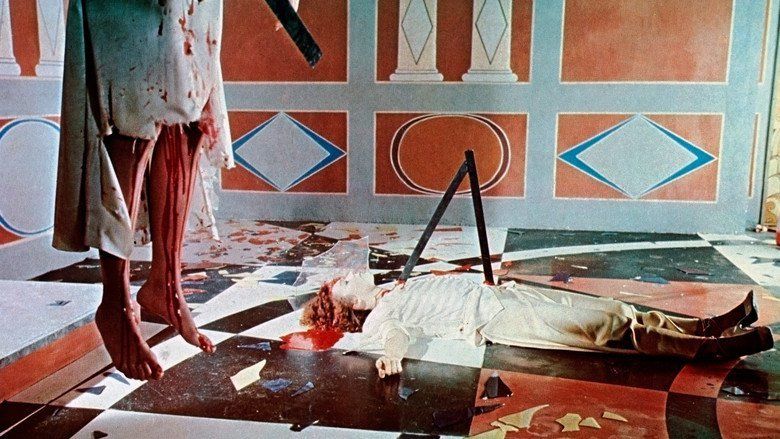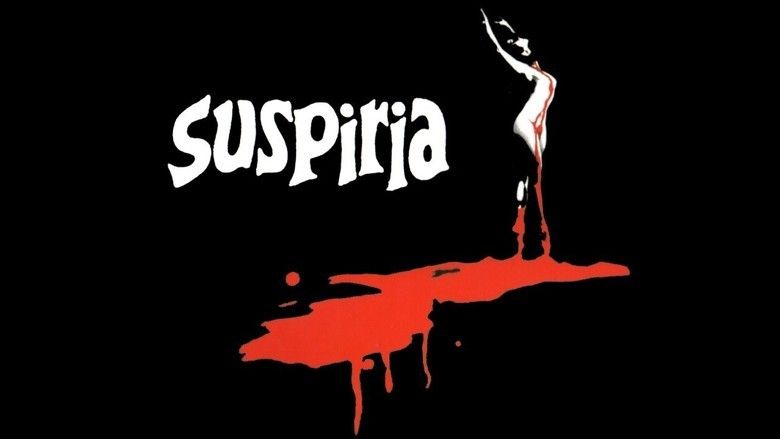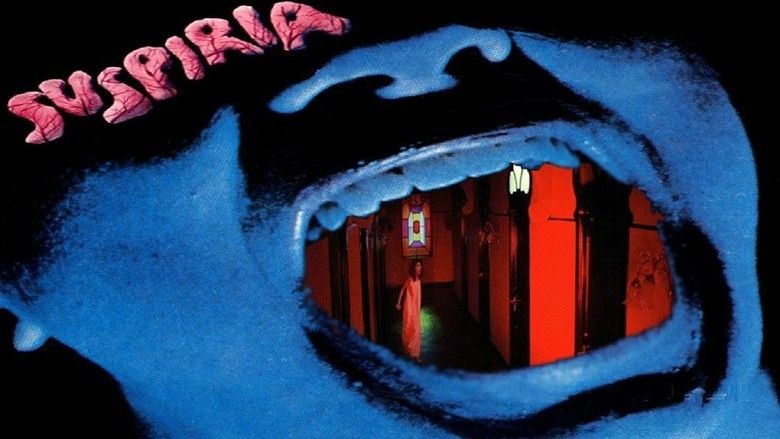The Three Mothers
7.8 /10 1 Votes
Genre Horror, Mystery Release date December 10, 1979 (India) Film series The Three Mothers Language English | 7.6/10 IMDb Duration Cinematography Luciano Tovoli | |||||||||||||||||||||||||||||||||
 | ||||||||||||||||||||||||||||||||||
Cast (Suzy Bannion), Stefania Casini (Sara), Flavio Bucci (Daniel), Miguel Bosé (Mark), Barbara Magnolfi (Olga), Susanna Javicoli (Sonia)Similar movies Hansel & Gretel: Witch Hunters , Dark Shadows , Pumpkinhead , Deathstalker , The Eternal , Little Witches Tagline The Most Frightening Film You'll Ever See! | ||||||||||||||||||||||||||||||||||
The Three Mothers (Le Tre madri in Italian) is a trilogy of supernatural horror films by Italian film director Dario Argento. It consists of Suspiria, Inferno and The Mother of Tears. Each film deals with one of the titular "Mothers", a triumvirate of ancient and evil witches whose powerful magic allows them to manipulate world events on a global scale.
Contents
- Cast
- The Three Mothers
- Mater Suspiriorum Helena Markos
- Mater Tenebrarum
- Mater Lachrymarum
- Inspiration
- References

During the 2007 Toronto International Film Festival, Argento stated he had not ruled out the possibility of shooting a fourth film dealing with the Three Mothers. His daughter Asia "joked" that one day there might be a prequel.

Cast

The Three Mothers

The story of the Three Mothers begins at the dawn of the 11th century, when three sisters created the pernicious art of witchcraft on the coast of the Black Sea. In the years that followed, they wandered the world and amassed great personal wealth and power, leaving only death in their wake. Both Mater Suspiriorum and Tenebrarum have claimed that the Mothers are Death personified.

In the late 19th century the women commissioned E. Varelli, an Italian architect based in London, to design and construct three stately buildings. From these enchanted, bastion-like homes the Three Mothers "rule the world". According to Varelli's memoirs, entitled The Three Mothers by an anonymous colleague, the architect learned too late of the women's evil nature. (At least six copies of the book are known to have existed. Four may have been destroyed at the end of Inferno.) The residences he designed will become so corrupted that eventually the land they were built on will become pestilential.
Mater Suspiriorum / Helena Markos

Mater Suspiriorum, the Mother of Sighs, is the oldest and wisest of the Three Mothers. Her given name is Helena Markos. She is also known as The Black Queen. The actress Lela Svasta, who portrayed Markos in Suspiria was uncredited. According to Jessica Harper, "the witch was a ninety-year-old ex-hooker Dario had found on the streets of Rome."
Markos, a Greek émigré, was exiled from many European countries and had written several books on a variety of arcane subjects. In 1895 she founded the Tanz Akademie ("Dance Academy" in German), a school for dance and the occult sciences, in the Black Forest outside Freiburg, Germany. The locals feared her, having intuited that she was a witch. As Markos' wealth grew so did suspicions about her true nature. To avert this unwanted scrutiny, she faked her own death in a fire in 1905. Control of the academy, which became solely a ballet school, was said to have gone to Markos' prize pupil. In reality, this was Markos herself. (As the original Freiburg building "Haus zum Walfisch" the Akademie bears a plaque stating that Desiderius Erasmus once lived there.)
In Suspiria Markos is the Directress whose presence is concealed by her coven, headed by Madame Blanc (Joan Bennett). A young American, Suzy Bannion (Jessica Harper), discovers the hidden chambers beneath the school after several pupils are killed by Markos' proxies. The aged witch attempts to use her magic to kill the girl, but her powers — including those of invisibility, illusion casting, and telekinesis — prove insufficient due to her enfeebled state. Bannion defeats Markos by stabbing her through the neck. The witch's death causes the foundations of her home and coven to fail.
In The Mother of Tears it is revealed that before the events of Suspiria Elisa Mandy (Daria Nicolodi), a white witch, sought to challenge Markos' evil might. The two battled in Freiburg, and Markos slew both Elisa and her husband. However, Elisa was able to weaken Suspiriorum into the hag-like state seen in Suspiria. According to Father Johannes (Udo Kier) in the third film, the battle left Suspiriorum "a shell of her former self". Elisa's daughter Sarah would later defeat Mater Lachrymarum in Rome.
Mater Tenebrarum
Mater Tenebrarum, the Mother of Darkness, is the youngest and most cruel of the Three Mothers. Her true name is not given; her home is located in New York City and was christened in 1910. The house's number is 49 and bears a plaque that states that Georges Ivanovich Gurdjieff once resided there.
In Inferno the character is portrayed by Veronica Lazar. She masquerades as Professor Arnold's nurse for much of the film. At the climax, Mark Elliot (Leigh McCloskey) descends into the bowels of her home to confront her. He learns that Arnold is in fact the architect Varelli, and essentially Tenebrarum's slave. Tenebrarum's bloodlust would ultimately be her own undoing, as one of her victims, a maid, was inadvertently responsible for the house catching fire in the midst of her death throes. When Elliot comes across her, Tenebrarum laments cryptically that "It's all going to burn down... just like before." Tenebrarum is perhaps referring to Suspiria's finale, during which Mater Suspiriorum is killed and her home eventually burns to the ground. After sealing the room she laughs psychotically, makes an ambiguous speech, and disappears. However, her reflection remains in a mirror and bursts out moments later as Death. Elliot flees the room by breaking down the door. In the final scene of the film, the skeletal Tenebrarum perishes in her crumbling home when she is buried underneath a pile of burning rubble.
Mater Lachrymarum
Mater Lachrymarum, the Mother of Tears, is the most beautiful and powerful of the Three Mothers. Like Tenebrarum, her true name is unknown. Inferno suggests that her home in Rome, Italy may be located near No. 49 Via Dei Bagni - the Abertny Foundation's Biblioteca Filosofica - when Sara (Eleonora Giorgi) notices a strange sweet smell in the air. In The Mother of Tears Lachrymarum's home is revealed to be the Palazzo Varelli.
In Inferno Lachrymarum attempted to spellbind Mark Elliot during a music lecture in Rome. According to Argento, Ania Pieroni did not return to reprise her role as Lachrymarum in The Mother of Tears because "she now has five kids!"
Lachrymarum is portrayed by Israeli actress Moran Atias in The Mother of Tears. After the deaths of her sisters, the witch has been hibernating, and is awakened when Sarah Mandy (Asia Argento) opens the urn in which her most powerful relic, a red tunic, is stored. As her minions wreak havoc on the city above, Lachrymarum hides below ground in the catacombs of her Palazzo, regaining her strength. She is defeated when Sarah Mandy discovers her subterranean lair and rips and burns her tunic, causing the Palazzo to collapse. Lachrymarum is killed when an ornamental obelisk from the top of the building crashes into the ceremonial chamber, impaling her.
Inspiration
The idea of "Three Mothers" comes from "Levana and Our Ladies of Sorrow", a section of Thomas de Quincey's Suspiria de Profundis. The piece asserts that just as there are three Fates and Graces, there are also three Sorrows. They include Mater Lachrymarum (Our Lady of Tears), Mater Suspiriorum (Our Lady of Sighs), and Mater Tenebrarum (Our Lady of Darkness). The attribute of each woman (tears, sighs, shadows/darkness) is a direct translation of her name from Latin. (Mater being the Latin word for "mother".)
Suspiria clearly derives its title from the woman delineated in de Quincey's work. However, Inferno's title does not reference Mater Tenebrarum. Thus, Argento's 1982 film Tenebrae is sometimes mistaken as the second installment in the trilogy.
Coincidentally, Fritz Leiber published his novel Our Lady of Darkness in 1977, the same year that Suspiria came out. This novel also references De Quincey's Suspiria de Profundis and quotes from it in its foreword. Just as in Argento's telling, the novel focuses on buildings and architecture, as the place where evil dwells. However the parallels end there. Leiber's novel pursues a more Lovecraftian mythos and the source of the malevolence comes from a male warlock rather than a female witch. Despite the lengthy introductory quotation from de Quincey, the three Ladies, or Mothers, make no appearance in Leiber's work.
References
The Three Mothers WikipediaThe Three Mothers IMDb The Three Mothers themoviedb.org
